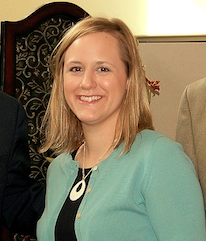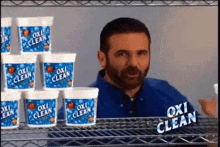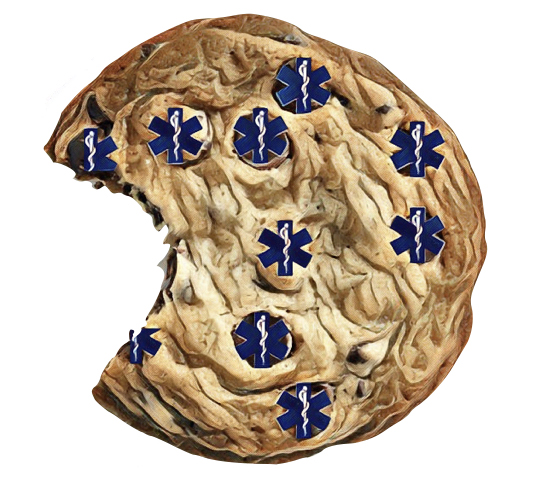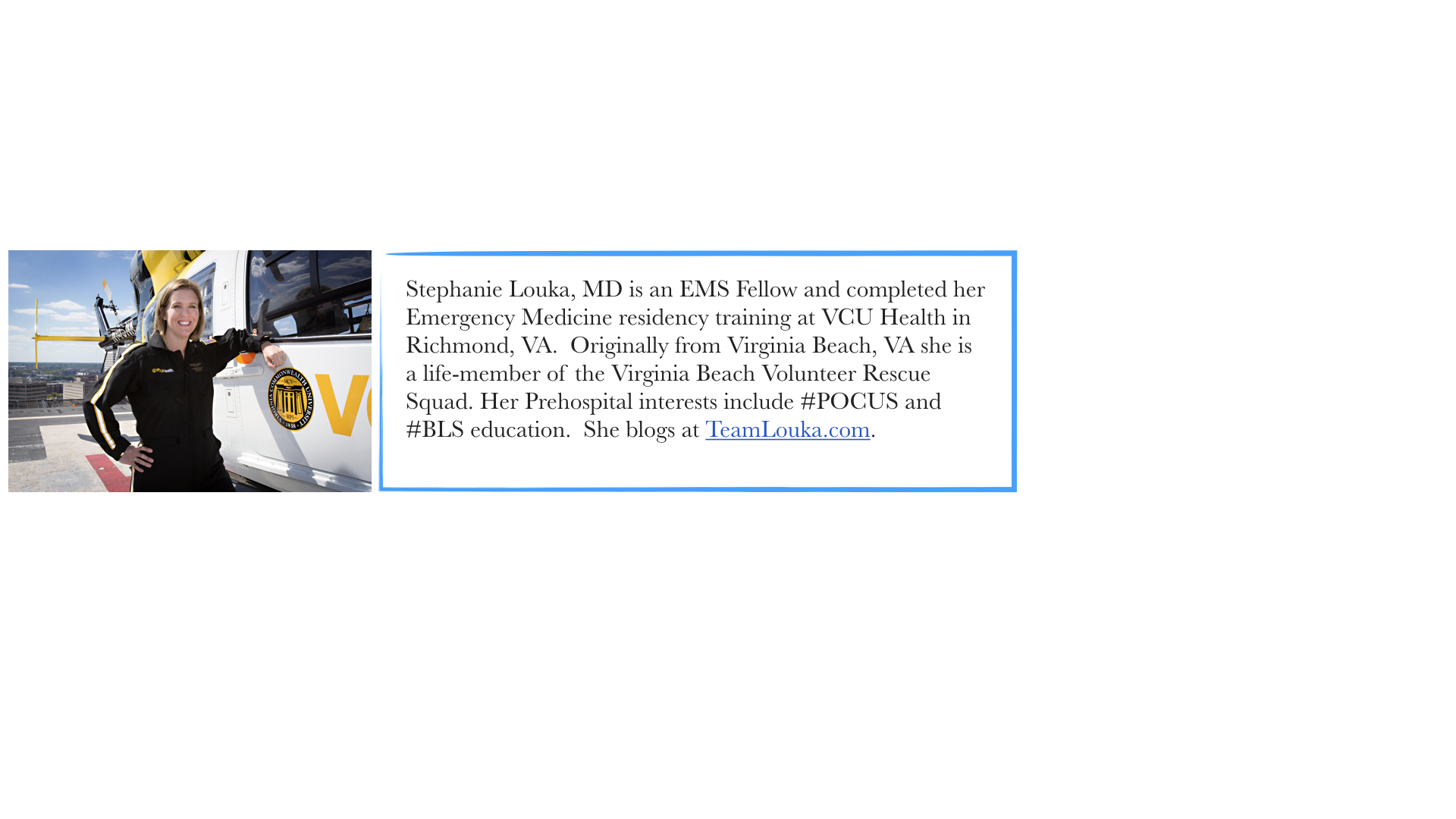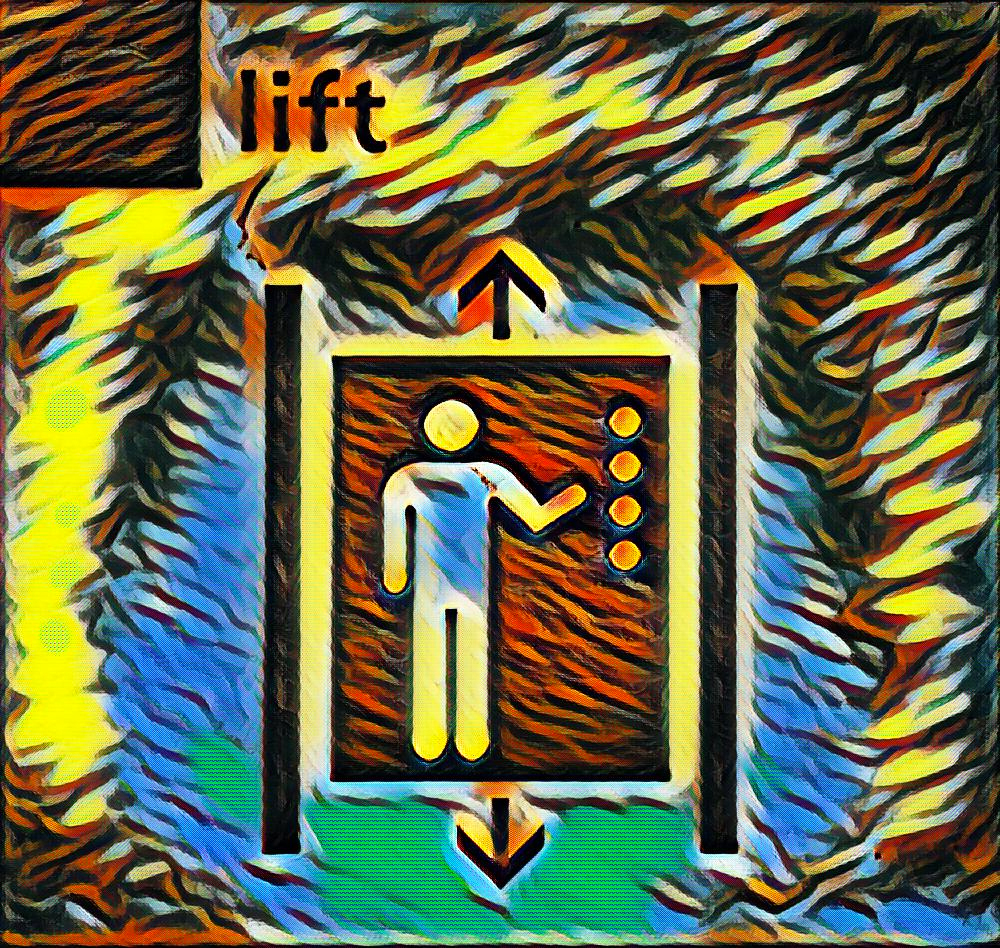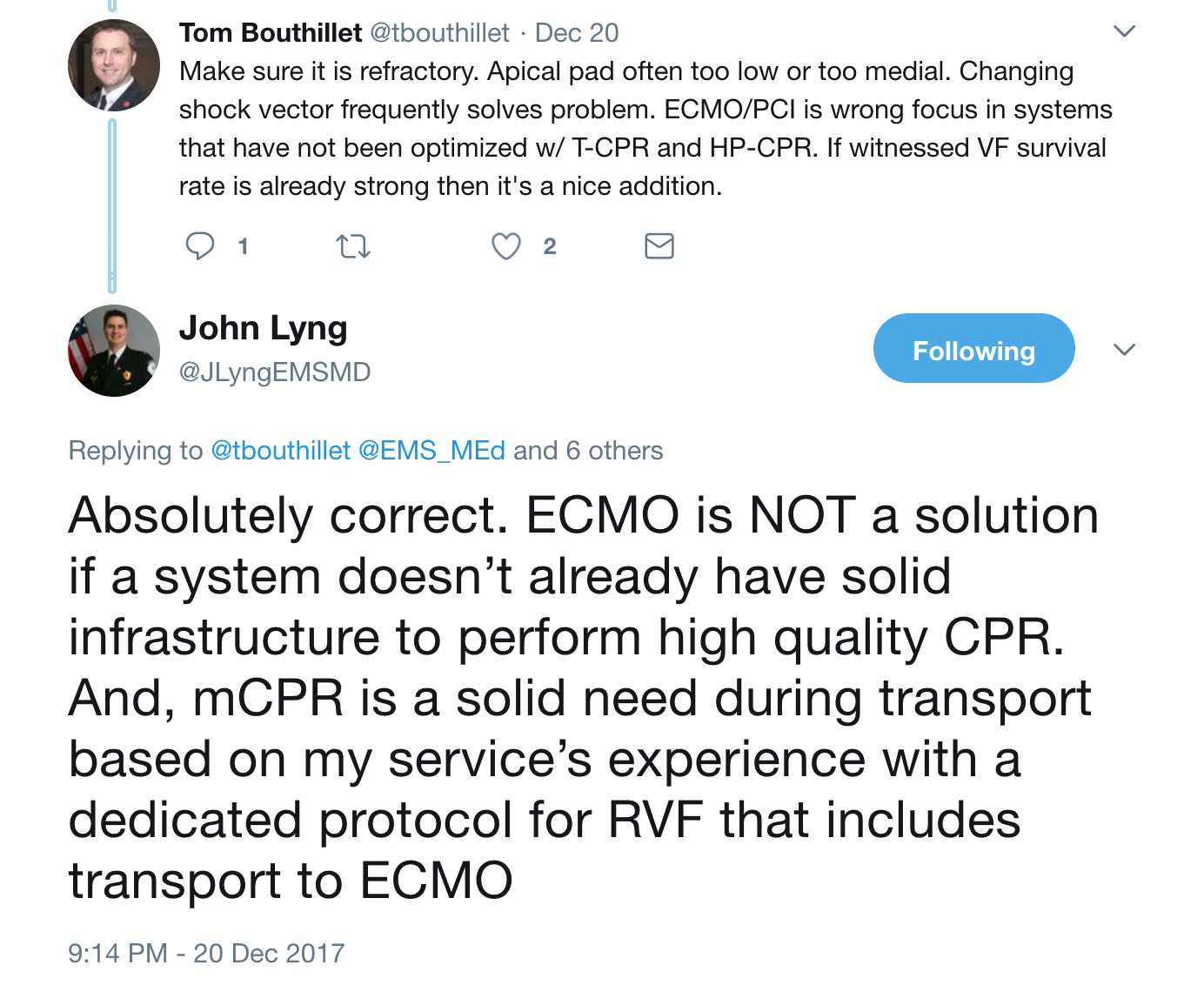By Christopher Galton, MD NRP
When we start our EMS careers, the path forward seems easy. You want to run every great call there is to run and you tell yourself that the path to becoming the best paramedic or EMT is through sticking tubes into people, covering up holes in the chest, and driving fast down the road. After a few years, most of us realize that longevity in this career comes from being satisfied with the less sexy calls. I was recently standing around with a group of EMS colleagues and we were talking about how the people that stay in this career don't depend on the drama to keep them going. This discussion got me thinking about the value of mentorship.
My three.
Three very important people in my career shaped the paramedic and physician that I am today. These three people helped guide me toward a healthy EMS career and are a large part of why I continue to work in EMS even though the cost to my personal life is frequently high.
My first medical director was one of the early Denver General paramedics. After a long paramedic career, he went on to be a very successful emergency physician and eventually the EMS medical director of Colorado. Arthur Kanowitz was the physician that introduced me to the idea that EMS patients don't need to suffer. He believed that EMTs and paramedics had the ability to make positive impacts on the lives of every patient they interacted with. In the late 1990s, the mindset in EMS was that pain medications were potentially dangerous and should be used in only the worst cases. Dr. Kanowitz challenged that idea and pushed back against many powerful and prominent physician EMS leaders. He did research on the use of prehospital analgesics and demonstrated both safety and efficacy. He took that information to his colleagues and fought for what he believed in. His passion for looking past the "emergency" part of what we do and treating ailments without regard to circumstance, continues to change EMS minds across the country. Art is the reason that I am so passionate about treating pain and the reason that I will not stop preaching his vision until our collective performance is at a high level.
The first "ALS chief" I ever worked for was another early Denver General paramedic named Jeff Forster. Jeff was a legend in Denver as one of the best paramedics they ever turned out. He was the type of guy that people turned to when things were going bad, and he was the paramedic that every other paramedic wanted to be, including a baby paramedic named Galton. He was a legend for a variety of reasons, and he taught me an immense amount about not only EMS, but how to treat employees, how to lead by example, and the meaning of being a leader instead of a manager. One day, when the world was blowing up, he hopped on an ambulance and we went on a call together. After the call, he cleaned the back of my ambulance better than it has ever been cleaned before. I told him that I was happy to clean up after myself and asked him why he not only cleans the floors of my ambulance so diligently, but still rides at all hours of the day taking any call that came his way. He looked me square in the eyes and said one of the most impactful things I have every heard. He said "never ask someone else to do something that you are not willing to do yourself." He led by example, and of all the great people I have met over the course of my professional life, he stands out as someone that worked hard everyday to earn, and then maintain, the respect from those around him. It did not matter whether they were the chief medical director, entry level paramedic, or housekeeping staff cleaning up at the end of the day. He was always happy to help anyone do anything just to demonstrate that he valued them as much as we valued him. To this day, if he called me for help, I would claw my way through a brick wall to help him without even a thought.
Finally, I want to end with the person that had the most significant impact on the way I operate as a paramedic today. Thom Hillson (aka Thom Dick) is a columnist for multiple different EMS magazines and journals. He has written books about caring for patients and fellow EMS colleagues. To this day, I have never met another human being that cared more for every other living sole in this world. I started off my EMS career working the night shift for eight years, and I loved it. One of the drawbacks of the night shift is this creeping cynicism that becomes suffocating because of the typical clientele that make up your regular call volume working in an urban/suburban EMS system. I had the pleasure of working with Thom for 4-5 years early in my career when I was an impressionable paramedic. I remember thinking he was a wise old sage that had been everywhere and seen everything. The two of us developed a wonderful relationship and he ended up writing me the best letter of recommendation for medical school that I have ever seen.
One day Thom pulled me aside and asked me to go grab lunch with him and he was the type of guy that you wanted to be around all the time, so I was thrilled. While we were out eating, he asked me if everything was all right. Initially I thought this was just banter, but he continued to say that he was worried about me. He had noticed a deterioration in my typically positive, upbeat attitude. I told him about being a little depressed lately because of some bad outcomes and how I was likely going through a period of burn out, but I really just tried to blow it off. He did not let up and we proceeded to have lunch weekly for the next few months. During those lunch meetings, Thom and I talked about a wide variety of things, many times not mentioning EMS at all. It was at one of these meetings that he used a phrase that has stuck with me to this day and is ever present when I am working in EMS. We were talking about customer service in EMS and why I was worried that I stopped caring about my patients. He specifically challenged me by saying "why not." What he meant by that was much more complicated than I initially appreciated. He was really asking why I was not willing to go the extra mile anymore to take care of people and why was I staying in this job if that was the case. This was the point that I realized that a career in emergency services is not about you, it's about the people that need you. This is when I finally understood that being an EMS professional was not about the person that could put an endotracheal tube in upside down with a patient stuck in a car that was hanging off a cliff in a snowstorm. It was about knowing that someone is calling 911 because they need your help. That might be taking them to the hospital because they are having chest pain, but it also might mean helping them clean up after falling on the way to the toilet. You don't get into this career because you want to help an elderly person change out of urine soaked clothes and then start a load of laundry. You do stay in this career because you realize that those are the patients that need your help the most and you are the person that they turned to in their moment of need. I would encourage you to take Thom's advice and ask yourself "why not"if you ever have a question about customer service and the needs of the citizens that we are charged to care for in their time of crisis.
Finding the Right Mentor
My mentors are a large part of why I have been able to achieve professional success and reach goals that I would have thought were out of reach. Most high level leaders at Forutne 500 companies insist that their employees have mentors and embrace those relationships while accepting the lost time required to build them. They know that they will get more out of their employees in the long run when mentees have goals, purpose, and guidance.
I’m sure you have all heard the phrase “it’s not what you know, it’s who you know.” Your mentor is the “who” in that expression that is capable of opening doors and making connections on your behalf. My mentors have frequently made phone calls, sent emails, and made personal introductions to connect me with the right people. That is how business is done and you should not be embarrassed to take advantage of those connections.
Hopefully I sold you on the value of having a mentor in your professional life. The first hurdle is finding the right mentor for you. I think you need to start by identifying the personality traits that you want to emulate. In EMS, those traits might include unconditional empathy, a calming demeanor, a driving desire to learn, or an altruistic belief in serving the community. Your mentor should be someone who has established a benchmark for you to work towards.
The second step is identifying people that you already have a connection to, that are 2-3 steps above you in the pile. For instance, I am one of the Deputy Medical Directors of Monroe County. If my professional goal was to become a Chief Medical Director of a county or region, then I would start by identifying people in those positions who would serve as good benchmarks for me. They are doing the job that I want to have, and are consistently demonstrating their success in that position.
Step three is approaching the potential mentor. You anxiety level should be pretty low. This is not asking someone out of your league on a date or walking into your boss’s office to ask for a raise. I’ll let you in on a little secret, any good mentor will be flattered that you have asked them to help you grow in your career. By asking them, you are saying that you think they are doing something right and that they have the ability to guide you to success. That is a pretty impressive compliment and if they don’t see that, then they are probably not a good mentor for you anyway.
The final step is developing that relationship. A potential mentor needs to know that you will value their input and put their advice to good use. You are asking them to give up their valuable time to guide your forward in your career with little direct benefit for them. Kathy Caprino, a columnist for Forbes, recently tackled the issue of finding a mentor and she takes it to the next level by saying that a potential mentor has “to like, trust and believe in you already.” She goes on to ask the question, “are you somebody you yourself would like to mentor?” If you cannot answer yes to that question, then you need to work to become that person before you consider engaging a mentor.
Mentorship should not be forced. The relationship needs to develop organically without it being coerced. This usually occurs during the initial few meetings where your mentor will start to help you set some goals and work on the things that need to occur for you to meet your goals. A great mentor is someone who can inspire you when you need to be inspired and can put you in your place when you need to get leveled out. If the relationship is not that strong, then that is not mentorship. Your mother can be your cheerleader. Your mentor fills the role of coach, cheerleader, friend, leader, and follower based on what you need, when you need it. It is a special relationship that should be cherished.
A Productive Mentor-Mentee Relationship
So, now that you have a mentor, how do you turn that into a productive relationship?
When I work with my mentors or I have mentees, I always start with a face to face meeting. This can be as simple as meeting for coffee, lunch, or some other informal setting. Before you commit to this, you need to analyze the type of relationship you have or will have with your mentor/mentee. I think the relationship between a medical student and the dean of the medical school would be different than the relationship between an EMT working through paramedic school and their paramedic preceptor. Some meetings should happen during normal business hours in a traditional office setting, while some will happen in the corner pub after a long shift. Where to meet up has a lot to do with the type of relationship that will develop.
The next step is preparing for your meeting. In my case, that means developing a list of things I want to talk about in the weeks prior to the meeting, and then writing it down on a scrap sheet of paper that lives folded into my wallet until meeting time. Your list does not need to kill a tree if you are smart enough to use your smart phone. Maybe it is an email sent ahead of time or memorized if you did not get hit on the head with an oxygen bottle too often. Even if your mentor makes fun of your list (mine does every time), having a list demonstrates that you value their time and you want to be productive during your meeting.
During your meeting, what type of things should you discuss. In my mind, this meeting is broken up in three parts. The first part is usually spent catching up with my mentor on a personal level. Frequently I speak with my mentor or mentee about how things have been going because this is a relationship so it’s OK to invest into it and be human. Any good mentor wants to know that their mentee is maintaining adequate priorities and perspective with everything going on, especially when things are getting really busy. The second part is a review of the previous meeting and progress on the subjects that you discussed at the last meeting. The premise of this relationship is based on the mentor providing guidance to the mentee, so they certainly want to hear about how you advanced the ideas that you both spoke of previously. The final part is the new material and this is typically where the list comes into play.
In this busy world, everyone’s time is valuable. By the time my meeting hits, I have usually thought through what I want to say about the previous subjects as well as the newer things I want to talk about. It is OK and expected that your ideas are not refined, that is why you have meetings with your mentor. Part of their role is to help you refine those ideas into viable actions. A meeting should not be one sided and the mentor expects to have ideas bounced off them. You should expect them to critique and suggest things that you had not considered. Along those lines, it is OK to take notes during your interaction. Any mentor should be flattered that you are writing their ideas down. It shows that you value their opinions enough that you do not want to risk forgetting.
I have benefited greatly from having positive mentors in my life. I continue to have multiple mentors today who both directly and indirectly inspire me to be the greatest paramedic, physician, medical director, anesthesiologist, intensivist, coach, and friend that I can possibly be. If only they could help me find some time to sleep …
The text above first appeared as a three part series in the University of Rochester Division of Prehospital Medicine Newletter.










